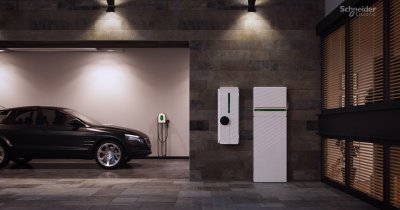CBAM’s objective
The main objective of this environmental measure is to avoid carbon leakage. It will also encourage partner countries to establish carbon pricing policies to fight climate change.
For that purpose, CBAM targets imports of carbon-intensive products, in full compliance with international trade rules, to prevent offsetting the EU’s greenhouse gas emissions reduction efforts through imports of products manufactured in non-EU countries, where climate change policies are less ambitious than in the European Union. It will also help prevent the relocation of the production or the import of carbon-intensive products.
The products of the following sectors will be covered by CBAM: cement, aluminium, fertilisers, electric energy production, iron and steel.
CBAM is designed to function in parallel with the EU’s Emissions Trading System (EU ETS), to mirror and complement its functioning on imported goods. It will gradually replace the existing European Union mechanisms to address the risk of carbon leakage, in particular the free allocation of EU ETS allowances.
As regards sectors covered by the Carbon Border Adjustment Mechanism (CBAM) - cement, aluminium, fertilisers, electric energy production, hydrogen, iron and steel, as well as some precursors and a limited number of downstream products - the Council and Parliament agreed to end free allowances for these sectors, over a nine-year period between 2026 and 2034.
During this time the CBAM will apply only to the proportion of emissions that does not benefit from free allowances under the EU ETS, in order to fully respect the World Trade Organisation's rules.
The EU emissions trading system
The EU Emissions Trading System (EU ETS) is a carbon market based on a system of cap-and-trade of emission allowances for energy-intensive industries and the power generation sector. It is the EU's main tool in addressing emissions reductions, covering about 40% of the EU's total CO2 emissions. Since its introduction in 2005, the EU's emissions have decreased by 41%.
The agreement reached in December makes the system more ambitious in order to cut down even further emissions.
The Council and Parliament agreed to increase the overall ambition of emissions reductions by 2030 in the sectors covered by the EU ETS to 62%.
The co-legislators agreed to a rebasing of the overall emissions ceiling over two years of 90 and 27 million allowances respectively and increase the annual reduction rate of the cap by 4.3 % per year from 2024 to 2027 and 4.4 from 2028 to 2030.
The market stability reserve (MSR) will be strengthened by prolonging beyond 2023 the increased annual intake rate of allowances (24%) and setting a threshold of 400 million allowances.
The Commission will assess and report by 31 July 2026 on the possibility of including the municipal waste incineration sector in the ETS with a view to including it from 2028 and assessing the need for a possibility of an opt out until 31 December 2030.
What’s next
The CBAM will initially apply to imports of certain goods and selected precursors whose production is carbon intensive and at most significant risk of carbon leakage: cement, iron and steel, aluminium, fertilisers, electricity and hydrogen.
With this enlarged scope, CBAM will eventually – when fully phased in – capture more than 50% the emissions of the ETS covered sectors. Under this political agreement, the CBAM will enter into force in its transitional phase as of 1 October 2023.
The gradual phasing in of CBAM over time will allow for a careful, predictable and proportionate transition for EU and non-EU businesses, as well as for public authorities. During this period, importers of goods in the scope of the new rules will only have to report greenhouse gas emissions (GHG) embedded in their imports (direct emissions), without making any financial payments or adjustments.
The agreement foresees that indirect emissions will be covered in the scope after the transitional period, on the basis of a methodology to be defined in the meantime.
Once the permanent system enters into force, according to a schedule to be defined in the revised EU ETS rules currently under negotiation, importers will need to declare each year the quantity of goods imported into the EU in the preceding year and their embedded GHG.
They will then surrender the corresponding number of CBAM certificates. The price of the certificates will be calculated depending on the weekly average auction price of EU ETS allowances expressed in €/tonne of CO2 emitted.
 Oana Coșman
Oana Coșman












Any thoughts?